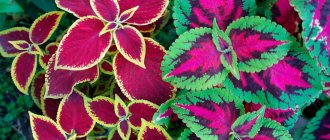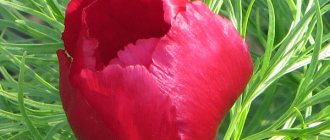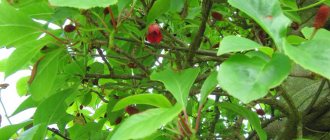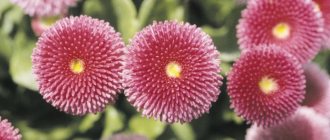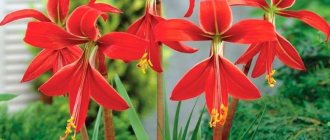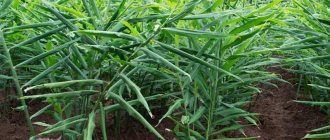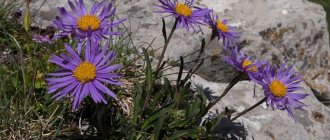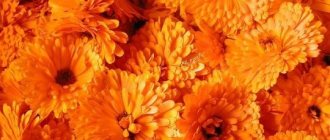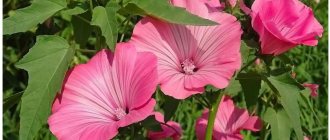Description of Asters perennial
Aster is a plant loved by many gardeners. The shoots of the herbaceous perennial are erect with dense foliage. The height of the stem ranges from 30 cm to 2 m. The leaves are bright green. They are small, lanceolate-shaped. The inflorescence is a small basket. In appearance they are very similar to small bright stars. They come in different shades:
- white;
- blue;
- purple;
- pink;
- raspberry.
Astra perennial
Description and characteristics of aster
Among the varieties of asters, there are more than 400 varieties, photos of which can be seen below. They all have certain similarities that are characteristic of the culture.
- Root system - has a fibrous structure, widely diverges to the sides, reaching a depth of 15 - 25 cm;
- The stems are bushy, green in color, sometimes have a reddish tone. The height can vary from 20 cm to a meter. The stem has small hairs and longitudinal grooves;
- The foliage is dark green and can be either smooth or pubescent. The leaves, shaped like an oval-rhombic figure with pointed points, are located mainly at the bottom of the stem, where they reach a decent size, while at the top they are smaller, slightly oblong.
There are both annual and perennial varieties.
Description of the types of perennial varieties of Asters
Evening primrose perennial (flower): planting and care
There are a huge number of garden perennial asters known.
Bush
This rather compact bush grows 60 cm. The seed ripening period is October. Bush aster is frost-resistant. However, after a few years, when a small hummock of new shoots forms above the ground, perennial bush asters may freeze out in winter.
short
The shrub does not exceed 40 cm. The tops of the low-growing perennial aster are decorated with many small stars. They are most often up to 3-3.5 cm in diameter. The flowering period is September. Against the backdrop of fading greenery, such a bright low flowerbed looks impressive in summer.
Bush aster
Autumn
Flowering period is September-October. In Russia, autumn asters are often called September asters. However, in some cold years, even the most careful owners may not see the plant’s flowers. The height of the autumn perennial aster can reach both 30 cm and 1 m.
Winter
This is the most persistent species of perennial asters. The inflorescences survive until the first snow. They are also called oktyabrinkas. Winter asters have the same problem as autumn asters - sometimes they do not have time to open their buds.
Globular
This species earned its name due to the ideal shape of the bush. The average height of a spherical aster is 50 cm. The flowers are small, but there are many of them, which creates the illusion of a ball during the flowering period.
Ball-shaped aster
Alpine
This type of flower is frost-resistant. After planting, the first flowering can be observed the following year from late May to mid-June. This is a low-growing variety of aster. The height does not exceed 25 cm, and the blossoming bud grows to 6-8 cm.
Austrian
This species reaches a height of 80 to 1.5 m. The flowering period of the Austrian beauty is September. They are frost-resistant. The flowers look like daisies, 6 cm in diameter.
Italian
Bushes of the Italian perennial aster are spherical in shape. They grow 60 cm. The flowering period of this species is mid-summer, namely July August. A small bush becomes strewn with flowers similar to daisies. The only difference is the dark purple color. They gather into dense sockets. The diameter of each flower does not exceed 5 cm. Among the Italian asters there are many varieties. At the same time, I would like to pay special attention to Bessarabian. This is the largest representative of this species. Its height reaches 75-80 cm. The color of the petals is bright lilac and soft pink. The core is brown.
Important ! Italian aster seeds ripen by early September.
English
This species is distinguished by dense and bright flowering. The inflorescences are blue, marsala, salmon, white, lilac, blue, pink. English asters reach a height of up to 2 meters. Therefore, this species is loved by gardeners for the opportunity to decorate the base of garden trees with small flowers with a diameter of 3 cm.
Other
The golden aster will delight you in the last month of summer with its bright flowers in the shape of cones. On long and strong shoots, from 10 to 20 buds develop.
Sideflower deserves special attention. Its shoots develop in the form of a vine. They are often white with a slight hint of pink. Towards the end of the flowering period they turn bright purple.
The American aster will delight the owner with abundant flowering that lasts all summer.
Sowing perennial aster seeds for seedlings
Using the seedling method, perennial aster seedlings are grown in the same way as annual ones. Sowing is carried out in the second half of March - early April. The hatched seeds are lowered into cassettes or a small container with fertile soil into pre-made grooves to a depth of 0.5 cm. The container is covered with plastic film or a plastic lid and kept in a well-lit room at a temperature of 18-22°C.
Shoots usually appear after 3-5 days. After this, the container is opened slightly and, if necessary, the soil is moistened with a spray bottle. During the day, seedlings are kept at a temperature of about 20°C, and at night – at 15-17°C. The place should be bright (a window sill is suitable) and well ventilated.
In the phase of three true leaves, the seedlings are planted in separate small cups or cassettes.
10-12 days after picking, asters are fed with ammonium nitrate (1 g per 1 liter of water). After another 2 weeks, 1.5 g of ammonium nitrate, 1.5 g of potassium sulfate and 3 g of superphosphate are added to the soil. Fertilizers are diluted in 1 liter of water.
Most popular varieties
Aster dumosus starlight
Shrub aster Starlight is a low, compact plant. Its inflorescences grow up to 4 cm in diameter and are bright pink. An adult perennial shrub aster resembles a ball about 40 cm high. Flowering is abundant and lasts from September until the first frost.
Aster dumosus kristina
Aster dumosus kristina is cushion-shaped, white with a bright yellow core. An adult flower grows 30-40 cm. It blooms in August-September.
Other
New Belgian: Bitchwood Rivell (purple), Dick Baylard (pink), Saturn (sky blue), Amethyst (lilac), Oktoberfest (terry blue aster).
English: Lillith Fardel (pink aster), Doctor Eckerner (red-violet), Braumen (lilac), Rothe Stern (burgundy).
Alpine asters: Dunkle Sean, Alba, Ruper, Gloria. Dwarf varieties harmoniously decorate border areas and small flower beds.
Use in landscape design
Low-growing perennial asters look beautiful in group plantings on lawns, alpine hills, and flat rockeries. They make excellent borders along paths.
Medium-growing and tall varieties are used in the background in mixborders . The value of these plants is that all summer long, dense bushes of asters with dark green small leaves serve as an excellent background for any flowers. Only in autumn do they come to the fore, creating bright spots of color in flower beds.
Cool blues, cyan and purple asters contrast perfectly with the yellow and orange-red foliage in the garden. Low-growing asters are often planted in company with Iberis, ageratum, and salvia. For tall varieties, chrysanthemums, late cannas and amaranths are good partners, for medium-growing varieties - marigolds and yarrows.
How perennial Asters reproduce
These flowers are rarely propagated by seeds.
Important ! The problem is that they quickly lose their germination properties. For this flower it is preferable to use vegetative methods
Dividing the bush
To propagate using this method, it is recommended to wait until the flower grows 3-5 cm from the ground. Next, the bush is divided into small parts with 2-3 buds and planted. The very next year, the divisions form a full-fledged plant. It is better to divide every 3-4 years. This helps rejuvenate the root system and also prevents the development of fungus.
Dividing the bush
Cuttings
For propagation using this method, you can use either the top or the whole stem. For rooting, it is recommended to select areas with loose soil in a shady area. The cuttings are rooted into the ground and covered with film. There are no strict time limits. The procedure can be carried out throughout the summer.
Cuttings
How to collect aster seeds
To collect the seeds, leave the first few formed inflorescences. Please note that the collection period begins 40-60 days after the start of flowering. Therefore, it is often difficult to collect seeds from late-flowering asters, because frosts often occur in the fall, causing the flowers to die along with the immature seeds. In this case, the heads of the asters are cut off in the fall before the weather gets colder and laid out on the windowsill at home. However, unfortunately, these seeds often lose their viability.
In the fall, it is better to dig up a bush of the plant, plant it in a spacious pot and then grow it at home at a temperature of 16-20°C in a well-lit place. When the inflorescences wither and their center darkens and is covered with white fluff, the flower is cut off, wrapped in paper and placed in a warm and dry place. Seeds are stored for no more than 2 years.
Features of home care
Aster is an outdoor plant. However, its seedlings can also be found in the homes of experienced gardeners. To grow a strong and healthy plant, you must follow the basic recommendations.
Temperature
For active growth and development of seedlings, it is recommended to maintain a temperature of 15-16 degrees. As 3-4 leaves appear on the first shoots, the temperature can be reduced to 12-15 degrees.
Important ! To make flowers feel as comfortable as possible after transplanting them outside, it is recommended to reduce the room temperature at night. This will allow the seedlings to adapt to new open-air conditions as quickly as possible.
Lighting
Astra loves to bask in the warm rays of the sun. It is recommended to place the seedlings on a windowsill on the sunny side. If this is not possible, it is recommended to install lamps nearby. Many gardeners place containers of seedlings in the greenhouse for a period of time. This allows them to spend extra time in the sun, and it is also useful for hardening off the sprouts.
Watering
Watering should be plentiful, but at the same time rare. After each moistening of the soil, it is recommended to carefully loosen it. This will avoid waterlogging of the soil. The soil should not be allowed to dry out.
Spraying
Spraying is an integral step for growing healthy flowers. During the first week after the first sprouts appear, the soil is moistened with a spray bottle once a day. The second week - once every two days. In the third week, you can begin full watering 2-3 times a week, gradually reducing the frequency, but increasing the volume of liquid.
Humidity
The recommended air humidity in the room where asters grow should not fall below 65%. The maximum value is 80%.
Priming
Aster is a flower that prefers fresh soil. This is due to the fact that old soil may contain sources of various diseases and pests. The ideal mixture for a flower: sand, turf, decomposed peat. The components are mixed in a ratio of 1:3:1. It is necessary to exclude all large lumps from the soil.
Important ! For seedlings, ordinary river sand is suitable, but if you can’t get it, you can use coarse-grained sand, having previously calcined it.
Feeding
To grow strong flowers indoors, you need to think about feeding. It is recommended to carry out the first fertilizing 2 weeks after planting the seeds. It is during this period that the root system actively develops. For the first time, it is recommended to mix potash and phosphate fertilizers, and the proportion should be 2 times less than specified in the instructions. Fertilizer must be applied directly to the soil. If it gets on tender young leaves, burns may occur.
Plant care
The perennial aster is a very unpretentious plant and caring for it is very easy. This is one of the few ornamental plants in the garden that you can safely forget about immediately after planting. But still, in order for the aster to bloom magnificently and not get sick, you need to follow very simple rules of care. Caring for this perennial comes down to regular watering, weeding and disease control.
Watering
Astra does not like dampness, and therefore there is no need to water it too much. But in the summer, and especially during the dry period, when it is hot, the plants need to be watered well in the evening.
Mulching and loosening
Aster can grow on any soil, but this plant still prefers loose, breathable soil. If you have heavy soils on your site, then you will have to loosen under the bushes throughout the season.
Be sure to remove weeds around the bushes, as weeds can choke the aster and prevent it from developing well.
To weed less often, you can mulch the soil around the roots. It is better to use peat, crushed tree bark or sawdust as mulch. Not only will mulch prevent weeds from growing, but it will also help retain moisture in the soil, allowing you to water your plants less often.
Fertilizing
Asters are very responsive to the application of mineral and organic fertilizers. In spring and summer, any organic matter, phosphorus fertilizers and lime can be applied under the bushes. During active growth of bushes, you should feed them with humus. Applying fertilizers will help the bushes gain green mass and produce more inflorescences.
When and how does it bloom
Today, botanists know a huge number of species, varieties and hybrids of this unusually beautiful flower.
Types of flowers
The Aster family includes a huge number of flower species. Selecting a plant that is suitable for a specific installation or flower bed will not be a problem. Today there are several main and most popular types:
- ostrich feather;
- Duchess;
- bouquet;
- Victoria.
Flower shapes
According to their shape, asters are divided into several groups.
To size:
- small - up to 3.5-4 cm;
- medium - from 4 to 8 cm;
- large - from 8 cm.
Inflorescence shapes
According to the shape of the inflorescence:
- flat;
- rounded flat;
- hemispherical;
- spherical;
- semi-double;
- terry.
Flowering period
Asters are usually divided into 3 flowering periods. The first ones are spring. They bloom from May to June. Next comes the turn of summer. They bloom from June to August. This is perhaps the longest group of flowers. Autumn ones are pleasing from the end of August until the first snow.
Changes in care during the flowering period
During the birth of buds, the aster is fed a second time. For this, prepare 50 g. mixtures of phosphate and potassium for every 1 m2 of land. Just before flowering begins, the aster is fed a third time. The composition of the fertilizer remains the same. When the flowers have bloomed, it is recommended to reduce watering slightly. Asters are very sensitive to excess moisture, but do not overdry the soil. It is recommended to develop the frequency of watering yourself, based on the time for complete drying of the soil near the root system.
Important ! If the summer is dry, then watering should be plentiful. Otherwise, the flowers will be sparse and small.
Transplantation after purchase and during reproduction
It is recommended to transplant seedlings into open ground in early May. It is recommended to loosen the soil after each watering or rain. This helps to ventilate the root system and protects against rotting.
If the time for planting seedlings is missed, then you can resort to the cutting method, which can be carried out throughout the summer.
Brief classification of asters
Annual Pompon asters
Asters are annual and perennial herbaceous plants from the Asteraceae family. Perennial species include almost 600 members of the family and grow under natural conditions in all parts of the world: Europe, Asia, America and North Africa. Culturally perennial species have been grown since the 16th century.
The homeland of annual garden asters or callistephus is the Far East, China, and northern Korea. Known in Europe since the beginning of the 18th century. The first luxurious varieties with large double and densely double flowers of various colors were bred in European and American gardens.
In our country, aster selection has been developing since the 30s of the 20th century. The varietal diversity of annual asters is impressive. New products appear every year, and today garden centers and stores around the world offer flower lovers more than 4,000 annual varieties.
All asters have a branched root system and strong stems up to 15 cm – 2 m high. The inflorescences are dense baskets with a diameter of 1–16 cm, consisting of reed and tubular flowers. Reed flowers are located along the edge and have a variety of colors, tubular flowers are small and are located in the center of the basket. Most often they are yellow.
Aster novobelgian variety Patricia Ballard
There is no single worldwide classification of asters. Our country uses the domestic classification developed in the 70s of the 20th century. In it, plants are combined according to different characteristics: by flowering period, bush size, flower shape, purpose, etc.
According to the time of flowering, asters are distinguished: spring, summer and autumn.
According to the height of the bush they are distinguished:
- dwarf varieties up to 20 cm high,
- short - no higher than 35 cm,
- medium-sized asters - up to 60 cm,
- tall - up to 80 cm,
- giant asters - from 80 to 2 m in height.
The shape of the bush can be pyramidal, oval, columnar.
according to the shape of the inflorescences is more varied :
- non-double;
- semi-double;
- coronoids;
- curly;
- radial;
- hemispherical;
- spherical;
- needle-shaped;
- imbricated.
By method of use there are:
- asters for cutting, which include tall and durable plants with large double flowers;
- asters for flower beds and containers - dwarf and low-growing varieties that decorate borders, rockeries, ridges, terraces and balconies;
- universal varieties are plants with long peduncles and small double flowers.
Asters have few rivals in the richness of colors and shades. Wild plants are blue, red, pink-red in color. Thanks to breeders, today the main colors of asters are white, red, all shades of pink and purple. Two-color varieties are no longer uncommon.
Possible problems in growing
An attentive gardener immediately sees external changes in his favorite flower.
Problems with leaves
If the leaves begin to turn yellow, become brown, curl and dry out, this indicates improper care or the development of a disease.
First of all, you need to make sure that the flower is not overdried. You can try changing the soil moisture regime. If black longitudinal stripes are added to the listed factors, this indicates the development of fusarium. This disease appears if the soil is overly moistened and there is stagnation of water in the root system. In this case, it is impossible to save the plant.
The appearance of lumpy spots also indicates the development of late blight. To overcome the disease, it is necessary to cut off all affected areas and sprinkle with activated carbon.
Pests
Aphids, thrips and cicadas are the main pests of asters. They suck the sap from the plant and are carriers of diseases. To prevent the appearance and reproduction of insects, it is necessary to treat the flowers with Fitoverm solution or other insecticides.
The earwig is capable of gnawing not only the leaves of the flower, but also the stems and buds. To drive away the insect, it is necessary to regularly remove weeds and loosen the soil.
Important ! When the first signs of spider mites are detected, it is recommended to treat the leaves and stems of the plant with a soap solution.
Diseases
Mosaic disease appears as yellow streaks on the leaves. After this, chlorosis develops and the plant stops developing. To overcome this disease, it is recommended to treat the bush with Actelik or Peritrum.
Aster rust is a fungus whose natural habitat is the needles of pine trees. The disease is characterized by the appearance of swellings on the lower part of the leaves. They are filled with rusty spores. For treatment, use a 1% solution of Bordeaux liquid. Treatment is carried out after 10 days. If the disease is detected late, the bush is almost impossible to save.
Signs of improper care
Aster, although an unpretentious plant, will immediately tell its owner about improper care. First of all, the leaves of the plant signal this. They may wilt or change color. If measures are not taken on time, improper care will affect flowering. The inflorescences will be sparse and pale. In addition, the plant will have few flowers.
Aster
Many different types of asters have been bred. Before purchasing a particular variety, it is recommended that you read the description of the flower in more detail. General principles and rules may sometimes not be suitable for individual hybrids. If the flower bed is constantly renewed, then it is recommended to pay attention to annual varieties.
The most popular varieties of dwarf and low-growing asters - review with photos
Low-growing asters, as well as dwarf asters, are very loved by gardeners. In this article you will find their most popular varieties with descriptions and photos.
A flower plant such as aster is extremely popular among gardeners.
The secret of its success is the wide variety of varieties, differing from each other both in the shape and color of the petals, and in their height.
Over the past few years, flower growers have especially appreciated low-growing or dwarf varieties of asters, not exceeding a height of 25-35 cm.
They are widely used to design garden paths and flower beds.
Let's look at their most popular varieties.
A detailed overview of low-growing perennial asters and their popular varieties
Among the huge family of asteraceae, perennial asters stand out. And among them are low-growing and border varieties. The low-growing, or dwarf, aster is especially good for decorating borders, for planting along the edges of flower beds, large boxes, in landscape compositions in combination with evergreen shrubs, ornamental grasses or coniferous plants. Gardeners value low-growing asters for their frost resistance. It’s so nice to see the bright stars of dwarf asters in a garden that has fallen asleep on the eve of winter.
This herbaceous plant is good for cutting and in open ground. Perennial asters have tough, erect stems densely covered with leaves ranging in height from twenty-five centimeters to one and a half meters. The leaves are small, rich dark green. Flowers, simple or double, with a diameter of one to five centimeters. The color palette of dwarf asters ranges from white and blue to purple and crimson. According to the time of development, they belong to several groups:
- early - bloom in May-June;
- summer - bloom in July-August;
- autumn - they bloom in September-November and even under the first snow they delight with bright heads of inflorescences.
Video about the best way to plant asters and how to care for them
In this video you will find gardening tips on the best way to plant flowers in your garden. What conditions are best to create for them and how to take care of them.
In general, almost everything discussed in today's article is simply more condensed. I hope the video will be quite helpful for you in this regard.
It also briefly describes what varieties are available and how best to plant them based on that. There are also many beautiful photos of this autumn flowering of beauty.
The best varieties
Varieties are divided into spring, summer and autumn, as well as according to other characteristics. Let's look at them.
Varieties that bloom in autumn and late summer
Perennial asters grown in our gardens mainly come in three types:
- new english
- new Belgian
- bush.
They originate from North America, where they grow in grassy meadows, forest edges and thickets along the shores of water bodies. Among the unusual variety of varieties, it is easy to choose the ones suitable for each garden.
The most popular perennial varieties of the New Belgian species are tall, forming dense clusters with dark green leaves. They can even be found in abandoned rural gardens and on river banks. Of the nearly one hundred cultivated varieties, the following are distinguished.
Autumn varieties of the New Belgian species
Below are the most interesting representatives of this species.
Table. Belgian perennial varieties
| Diversity | Flower color | Photo |
| Little blue boy | Navy blue | |
| Marie Ballard | light blue | |
| Patricia Ballard | carmine | |
| Excess | lavender blue | |
| Astra my lady (Milady) | different color | |
| Astra Royal Ruby | Crimson | |
| Royal blue | alto | |
| White ladies | white | |
| Winston Churchill | carmine | |
| Company | rose with large flowers | |
| Freda Ballard (Freda Ballard) | red | |
| Dauerblau | blue |
New England varieties
This is an extremely attractive group of perennial plants. They are easily recognized by their narrow, light green leaves and tough stems covered with coarse hair. The varieties of this group are distinguished by their height and pleasant compactness.
Important: New England aster varieties do not grow; they can be safely planted next to other perennials without fear of dominating them.
The flowers look very delicate thanks to the numerous narrow petals with beautiful and clean flowers.
Table. Leader in this group of perennial varieties
| Diversity | Flower color | Photo |
| Andenken and Alma Poetschke | Red Rose | |
| Blue stripes (Barra Blue) | alto | |
| Pink stripe | pink | |
| September ruby (September tap) | red | |
| Ash House (Purple Dome) | eggplant |
Shrubs
These are the densest perennial asters. The cultivars are derived from crossings with new Belgian varieties. Low, compact plants quickly become groundcovers, creating attractive mats. They are used to create ridges and as ground cover crops in rock gardens.
Table. The most valuable varieties of perennials of this species
| Diversity | Flower color | Photo |
| Alice Haslam | carmine pink | |
| Herbstgruss von Bresserhof | hot pink | |
| Lady in Blue | blue | |
| Prof. Anton Kippenberg | alto | |
| Silberblaukissen | blue | |
| Snowsprite | white |
New blue variety Bluebird
Among the new perennial varieties worth considering is Bluebird or Bluebird, a variety of naked asters with large purple-blue flowers and broad leaves. The plant blooms profusely and is quite resistant to powdery mildew. It grows and produces large clusters of flowers.
With decorative leaves
Of the varieties with decorative leaves, Astra lateriflorus is recommended).
Popular perennial varieties:
- Prince (prince),
- Woman in black).
The varieties are distinguished by the purple color of their leaves and shoots and are decorative even when they do not bloom. Their dark bushes look great next to plants with blue, silver and gold leaves.
Perennial varieties of heather (Aster ericoides) have attractive foliage. This species has highly branched shoots and narrow needle-like leaves. It blooms in October, strewn with many small white flowers, and decorates the garden until frost.
Includes flowering aster varieties:
- blue – Blue Star);
- pink – Esther).
Heather aster loves dry and sunny places.
Aster sedifolius, or, as it is also called, “stella,” is a “star-shaped” variety of Nanus, native to southern Europe. Its numerous branches, covered with narrow leaves, create attractive cushions. The plant blooms with light purple star-shaped flowers.
Needle aster
This perennial variety is very popular among gardeners due to its decorative flower with thin needle-like petals. The plant can be affected by fusarium and requires special care.
Popular varieties:
- Gala,
- Lime.
Little-known varieties
A rare Italian perennial species (chamomile) blooms from July to September. Chamomile or Italian aster loves sandy, dry soils. Ideal for planting beds. The plant grows slowly and can remain in one place without replanting for many years. It includes more than 40 varieties.
The most popular varieties of chamomile aster:
- King George blue purple);
- Blue Bluethendeke);
- Blue Lake Geneva and Rudolf Goethe);
- purple dark purple queen);
- hybrid Astra Frikarta (Aster x Frikartii) is very valuable, but not frost-resistant);
- Munich (Mönch) - blooms all summer until late autumn, producing numerous purple flowers.
Some asters look very atypical. Looking at the North American species Aster divaricatus and Aster cordifolius, it is difficult to think that they are a group of plants. They form low bushes with light green longitudinal heart-shaped leaves. They bloom in late summer, producing many small flowers collected in loose inflorescences. It is better to plant them in large dense groups.
It is worth knowing that they tolerate drought well and also grow in partial shade. They can be successfully used as a cover species, planted under the canopy of trees and under bushes.
Asters blooming in spring and early summer
Not all asters bloom in late summer and fall. In gardens it is also worth growing species that bloom in spring from May to June.
Alpine
The most popular alpine star (Aster alpinus) is a perennial plant that grows on the limestone rocks of the Tatras, Pieniny. The plant forms low rosettes from which short stems with single flowers grow. Depending on the variety, alpine aster flowers are pink, blue, purple, and white.
Tongolian or bluish
Aster Tongolese or Tongolese, Tongolo bluish is native to China. The plant forms a compact flower field. The purple-blue flowers have a distinct yellow-orange center.
2 varieties are popular:
- Berggarden,
- Wartburgstern).
Both varieties love sunny places. It is better to plant them in a bed between low perennials, in rock gardens.
Low growing varieties
From low-growing varieties of bushy perennial asters, you can select the edges of ridges and use them as ground cover plants. These varieties also do well in clumps of grass.
Interesting varieties of low-growing asters:
- blue – Motley);
- medium varieties - smooth bluebird);
- narrow-leaved – Nanus).
Recommendations for planting and care
The soil
Dwarf asters, as for the most part, are unpretentious, but if you want splendor and long flowering, then, firstly, immediately plant them in good soil, and secondly, remember to feed them. If your land is poor, then apply fertilizer once a week; if it is moderately fertile, then once a month. Asters can be fed with complex preparations, fertilizers containing a lot of potassium and phosphorus, but not nitrogen. If we talk about organic matter, then no droppings or manure, you can only use rotted compost and humus.
The second important condition is the breathability of the soil. If the soil holds too much moisture, the root system may begin to rot and your flowers will wither. Therefore, during planting, you need to pour sand or perlite on the bottom, with humus on top. After each watering, it is better to loosen the beds, thereby giving the roots oxygen and destroying possible homes for parasites.
Also, before sowing or transferring seedlings, it is necessary to test the soil for acidity. This can be done using litmus paper, which is sold in gardening stores. Dwarf asters and all others prefer neutral soil and slightly alkaline soil - 6.5-7.5. To reduce acidity, lime is sprinkled on the site.
Watering and diseases
Everything here is quite simple - asters love moisture, but in moderation. That is, the season turned out to be rainy, which means you only need to loosen the bushes so that there is no stagnation. If there is enough moisture, then watering 1-2 times a week will be enough; if there is a drought, then every day. Many people believe that you only need to water flowers with settled water. But experience has long shown that this principle can only be applied to seedlings, and in the garden bed, simple water from sludge will be enough. It is more important to ensure that there is no crust on the surface and that parasites do not multiply.
Pests
Since we mentioned parasites, let’s talk about them too. Dwarf asters do not suffer from insects so often, but aphids and thrips can still settle on flowers. In this they are similar to chrysanthemums. It is better to start prevention than to fight an insect colony. The first thing you need to do is to water the soil even at the time of sowing the seeds, and it doesn’t matter whether you do this at home or have chosen the seedless method. Boiling water and potassium permanganate or hydrogen peroxide is the simplest and most effective option.
You can sprinkle the area with ash or onion peels, and infusions can also be made with them. Another option is to grate laundry soap - 75% and pour over the area before planting. Insects do not like spices and fragrant herbs such as wormwood. Therefore, they can also be used both before sowing and during spraying attacks. To prevent diseases, irrigation with a soap solution, water with potassium permanganate, copper sulfate, Bordeaux mixture, and “Hom” is most often used.
Important! Asters are prone to late blight, so they are not planted after nightshades and gladioli. It is also better not to grow bushes for more than three years in one place, and during replanting, update the soil and the asters themselves.
These simple techniques and tips are important and at the same time very easy even for beginners. Caring for asters will pay off on their part with abundant flowering, which will delight the eye on gray autumn days.
Planting and caring for perennial low-growing asters
Since the perennial low-growing aster is a winter-hardy garden perennial, it does not cause much trouble when growing. Moreover, these asters are practically not damaged by plant pests and do not get sick. In one place, bushes can grow for up to five years without loss of decorative flowering. But still, when caring for these varieties of asters, you must follow several general rules to achieve beautiful, long-lasting flowering:
- avoid excessive clustering of plantings;
- regularly weed the flower beds and loosen the soil between the bushes;
- do not fertilize asters with fresh organic matter; use compost or well-aged humus for these purposes;
- water asters generously in dry weather;
- before watering, add a small amount of a pale pink solution of potassium permanganate to the water;
- promptly remove wilted flowers and carry out decorative pruning of bushes;
- Tie up tall bushes of perennial asters.
Work on transplanting and propagating perennial asters is planned for spring - early summer. Asters are propagated by green cuttings, which germinate quickly and grow well. In addition, such traditional methods as dividing bushes or growing, sowing seeds for seedlings and then replanting them in open ground are used. When planting seedlings, it is imperative to fertilize the plants by adding complex mineral fertilizers to the soil.
Planting aster seeds
Check out these articles too
- Kimberly Strawberries variety
- The best varieties of yellow peppers
- Corn calories
- Drinkers for chickens
Although there are many ways to breed aster, they are most often grown through seeds. This method is especially recommended when breeding high-mountain asters. Sow seeds for seedlings in March. If you do not want to grow seedlings, you can immediately sow them in open ground. In the southern regions this happens in early April, in the central regions - by mid-April, and in the northern regions - closer to May.
Photo of aster - planting and care
Important!
If return frosts begin after sowing the seeds, the soil on the plantations is well mulched or covered with film so that the seeds do not freeze.
It is best to sow perennial asters in clay soil. Sandy, as well as heavy, clayey soil is not suitable for them, because in the first case there will always be a shortage of water, and in the second there will be too much of it. Aster blooms abundantly only in sunny areas; in the shade, more lush foliage is obtained. It is also worth remembering that tall perennial asters are afraid of drafts.
As for the planting method, there is nothing complicated here. Asters are sown in a single row, spread in a furrow to a depth of 3 cm. After planting, it is necessary to ensure that the air temperature is about +15 degrees, so seedlings will appear faster.
Diseases and pests
The alpine perennial aster is ideal for creating landscape design, is resistant to many diseases and pests, and is unpretentious in cultivation. However, in damp summers, if asters are improperly watered or planted in damp, waterlogged soil, the likelihood of the perennial becoming infected with powdery mildew increases sharply.
The disease is transmitted from plant to plant by air. The affected area depends on the density of asters and the presence of moisture on the leaves. In order to prevent this disease, it is recommended to treat flowers with Topaz twice before flowering. Topaz should be diluted at the rate of 2 ml of the drug per 10 liters of water.
Powdery mildew control agent
In the fall, it is recommended to treat alpine aster with copper sulfate (dilute 50 g of the drug in a standard 10-liter bucket of water), after which the plants need to be cut.
Infected shoots should be cut and burned, as the powdery mildew fungus can remain on the leaves and stems of the plant all winter, and in the spring it will release new spores and infect nearby flowers.
Biofungicides are used to treat asters:
- "Topaz".
- "Fitosporin".
- "Alirin" and "Gamair".
Copper sulfate and its solution for treating plants
There are other ways to protect plants:
- spraying with an ash solution (dilute 1 kg of wood ash in 10 liters of warm water, leave to infuse for 6-7 days. The drug is applied by spraying the leaf surface three times);
- treatment with a solution of laundry soap and copper sulfate (mix 100 g of laundry soap with 5 g of copper sulfate, treat the plants twice).
In addition, in the summer, during the active growth phase of the perennial, it is recommended to carry out three root feedings of the aster with stimulants. At the beginning of budding, asters are treated with the drug “Energen” (recommended dose: 1 capsule per half bucket of water). Then, during flowering, you need to give a second dose: the drug “Agricola for flowering plants” is used (about 30-35 g per bucket of water). The third time the plant is fed in August with potassium sulfate: 30 g per bucket of water.
Medium-sized asters
Novi-Belgii aster (Symphyotrichum novi-belgii) is a rather large plant, its height is 60–140 cm. It grows quickly and begins to bloom in September. Rain and wind can cause shoots to fall apart, so the bushes must be tied to stakes.
Aster novo-Belgian
Among the interesting varieties: lavender-blue Bridgette 60–80 cm high, ruby red Royal Ruby (80–100 cm), white White Ladies (80–100 cm).
How to grow a low-growing aster
Aster grows well in sunny areas, but can withstand light shade. Low-growing varieties of asters can be planted in whole groups, or borders can be made from bushes. Bright bushes of autumn aster can be a soloist in a flower bed. Low-growing varieties of aster can be used to frame garden paths. Planting these plants is very simple.
Site selection
In order for your asters to bloom magnificently in the fall and grow well for several years without transplanting, you should choose the right site for them. The best place to plant perennial asters is a sunny area. The more sunlight the bushes receive, the more abundantly and luxuriantly they will bloom. Astra, of course, loves watering in dry weather, but at the same time does not tolerate stagnant water. Therefore, a site for it must be selected without groundwater and not in a lowland. It is ideal if the chosen location is on a slight hill so that water does not accumulate at the roots of the bushes.
Landing
The best period for planting, transplanting and propagating perennial aster is spring. Experienced flower growers, in order not to infect their garden with viral diseases of garden plants, prefer to buy planting material in nurseries or in specialized stores. You can also grow aster from seeds or by cuttings or dividing a bush, if you already have such plants.
